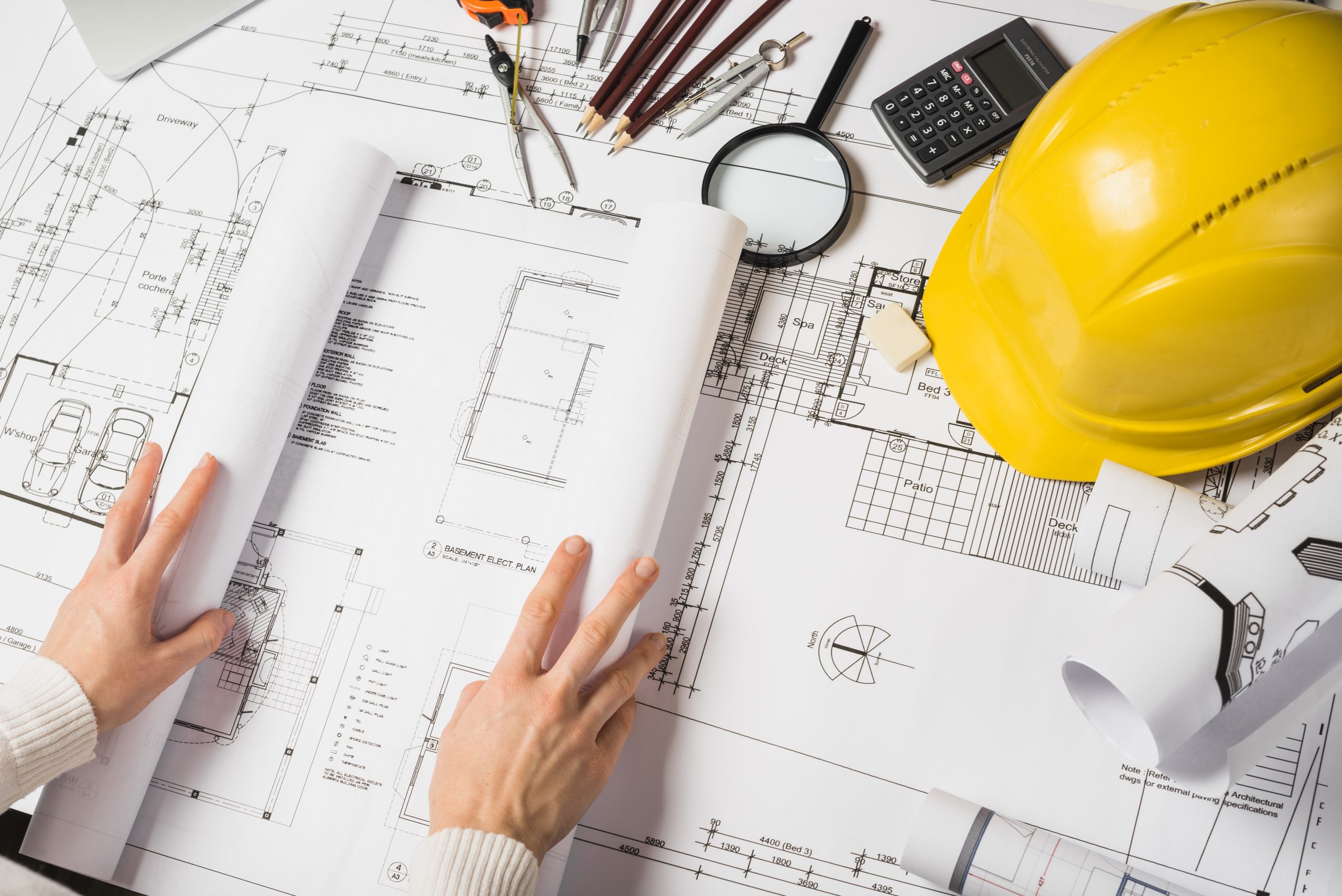Architect Rules for Designing Timeless Interiors
Architect Rules for Designing Timeless Interiors
Blog Article
Understanding the Diverse Occupation Paths Available for Aspiring Architect
As a hopeful Architect, you have a world of job courses waiting for you. Whether you're attracted to standard design or the subtleties of sustainable design, there's a specific niche that straightens with your interests.
Standard Design: Designing Buildings and Frameworks
Traditional architecture concentrates on designing structures and structures that blend performance with visual allure. Your styles can show cultural heritage, showcasing regional customs while meeting contemporary demands.
You'll develop abilities in drafting, model-making, and site analysis, allowing you to picture and interact your ideas successfully. Engaging with customers, you'll need to understand their vision and convert it right into practical styles.
In addition, developing codes and sustainability techniques are important in your job, ensuring your frameworks are safe and eco pleasant. As you expand in your career, you'll find opportunities in household, business, or also repair jobs, each offering distinct difficulties. Welcoming typical style leads the means for a fulfilling career that admires the past while forming the future.
Urban Planning: Forming Areas and Public Spaces
As an aspiring Architect, you can play a necessary role as a metropolitan organizer, changing just how areas connect and work. By employing neighborhood engagement strategies, you'll ensure that citizens have a voice fit their atmosphere. Plus, integrating lasting layout principles will assist produce rooms that not just fulfill today's requirements but also safeguard the future.
Role of Urban Planners
While many could assume of architects as the single dreamers behind structures, city organizers play an important duty in shaping the wider landscape of communities and public rooms. By working together with various stakeholders, you'll help develop parks, transportation systems, and residential locations that promote social interaction and access. Your proficiency in spatial design and area dynamics enables you to picture future development while protecting cultural heritage.
Area Interaction Strategies
Reliable area involvement methods are important for metropolitan organizers to assure that the voices of residents are heard and valued in the planning process. To foster significant dialogue, you must focus on open online forums and workshops where area participants can reveal their concepts and worries. By proactively paying attention and including responses, you'll produce areas that show the neighborhood's requirements, eventually leading to more successful and sustainable urban settings.
Lasting Layout Concepts
When developing urban areas, integrating sustainable design concepts is essential for creating environments that grow both environmentally and socially. You need to begin by concentrating on energy performance, utilizing materials that reduce waste and advertise recycling. Think about integrating green rooms, like gardens and parks, to enhance biodiversity and boost air high quality. Promoting walkability and public transportation can lessen reliance on automobiles, fostering a much healthier neighborhood.
Designing with water preservation in mind is likewise vital-- consider rain yards and permeable surface areas to manage stormwater. Including community members throughout the planning procedure guarantees that the areas you develop meet their requirements and encourage social interaction. By welcoming these principles, you'll add to vivid, lasting metropolitan landscapes that benefit every person.

Landscape Style: Producing Sustainable Exterior Atmospheres
As you explore landscape style, you'll find essential layout principles that develop lovely and functional outdoor areas. Sustainable techniques play a crucial role in making certain these atmospheres thrive while lessening environmental effect. And also, you'll discover a selection of profession possibilities that allow you to make a genuine distinction in how individuals interact with nature.
Style Concepts in Landscape
Understanding style concepts in landscape architecture is necessary for creating sustainable exterior environments that balance with nature. You'll require to ponder elements like equilibrium, scale, and proportion to guarantee your designs feel natural and welcoming. Including native plants not only improves biodiversity however additionally reduces water usage, making your landscape durable. Consider the circulation of space and how people communicate with it; paths and seating locations ought to welcome exploration and leisure. In addition, take note of seasonal changes, developing with materials that match the environments year-round (Architect). By focusing on sustainability and aesthetics, you can create outdoor spaces that enrich the community and promote well-being. Embracing these principles will set a solid structure for your job in landscape style.
Lasting Practices Summary
Sustainable techniques in landscape design not only concentrate on appearances yet likewise prioritize eco-friendly health and wellness and source conservation. By incorporating native plants, you enhance biodiversity and lower the requirement for chemical fertilizers and chemicals. Executing reliable irrigation systems helps preserve water and reduces drainage, protecting nearby communities. You can create rooms that promote soil wellness, such as making use of organic products and practicing permaculture principles. Additionally, including green facilities, like rain gardens and porous sidewalks, aids in stormwater management and lowers metropolitan warmth. You contribute to a much healthier earth and offer spaces that cultivate neighborhood connection when you produce exterior settings with sustainability in mind. Eventually, these practices guarantee your designs benefit both individuals and the environment for years to find.
Profession Opportunities Exploration
With a strong foundation in sustainable methods, landscape style provides a range of job paths that allow you to make a significant effect on the atmosphere. You can function as a landscape developer, creating cosmetically pleasing and practical exterior spaces, or concentrate on environmental remediation, aiding to revitalize broken ecological communities. Urban planners frequently team up with landscape architects to produce green areas in urban settings, enhancing city livability. If you're enthusiastic about education and learning, think about coming to be a landscape architecture teacher, inspiring future generations. Additionally, you may collaborate with nonprofits focused on ecological sustainability or participate in research study to introduce new techniques. Each course not just shapes beautiful atmospheres but also cultivates a healthier planet for future generations.
Lasting Style: Concentrating on Eco-Friendly Practices
As you discover your occupation in architecture, embracing environmentally friendly practices can establish you apart in an affordable area. Lasting style focuses on producing structures that decrease ecological impact while boosting passenger wellness. By including eco-friendly materials, energy-efficient systems, and sustainable building techniques, you'll add to a greener future.
Start by gaining expertise of eco-friendly certifications like LEED or BREEAM, which can reinforce your credentials. Consider how all-natural light, air flow, and thermal efficiency can enhance design. Team up with engineers and environmental specialists to innovate services that minimize waste and save sources.
Do not fail to remember the significance of neighborhood involvement-- interesting neighborhood stakeholders can motivate designs that integrate with the setting. As customers progressively prioritize sustainability, your competence in environment-friendly methods will not just draw in tasks however also meet your passion for liable style. Accept this important facet of the profession, and see your occupation prosper.
Historical Conservation: Shielding and Bring Back Cultural Heritage
While you commence on your architectural journey, take into dig this consideration the important duty of historic conservation in maintaining our cultural heritage. This field concentrates on the defense and reconstruction of considerable buildings, websites, and structures that tell the tales of our past. By engaging in historical preservation, you'll assist safeguard the architectural heritage that forms neighborhood identity.
As a historic preservation Architect, you'll evaluate historic importance and evaluate the problem of frameworks. You'll work closely with conservationists and historians to ensure genuine restoration strategies are used. This job path permits you to mix imagination with research, enabling you to develop solutions that appreciate initial materials and workmanship.
Your job not only adds to sustainability by recycling existing buildings however likewise fosters a sense of pride within neighborhoods. Welcoming this path will certainly aid you become a guardian of history, maintaining the stories and appearances that enrich our lives.
Interior Style: Enhancing Indoor Spaces
Historical preservation and interior design both share a dedication to boosting the built atmosphere, however they concentrate on various elements. While historical conservation emphasizes maintaining a structure's cultural and historic worth, indoor style absolutely nos in on optimizing indoor areas for performance and aesthetics.
As an aspiring Architect, you'll discover that interior design enables you to blend creative thinking with technological abilities. You'll design spaces that not only look good however likewise advertise comfort and effectiveness. This field includes understanding how light, color, and materials interact within a room, influencing state of mind and use.
You'll deal with numerous jobs, from property homes to industrial offices, guaranteeing that each environment meets the demands of its owners. By focusing on customer experience, you can transform interiors right into practical and inspiring spaces, making a significant influence on just how individuals engage with their surroundings. Embrace the possibility to boost indoor environments and form the method individuals function and live.
Industrial Design: Merging Performance With Aesthetic Appeals
Commercial style plays an important function in producing products that seamlessly mix looks with performance, ensuring that what you make use of everyday is not only aesthetically appealing yet likewise practical. As an ambitious Architect, you can engage on your own in this field, concentrating on creating everything from furnishings to consumer electronic devices. Your work entails understanding customer needs, products, and manufacturing procedures, allowing you to produce innovative options that enhance daily experiences.
In commercial style, you'll often work together with suppliers, marketers, and engineers, making sure that your layouts are not only lovely yet also possible. You'll discover to stabilize kind and feature, prioritizing usability without compromising design. By developing your skills in mapping out, 3D modeling, and prototyping, you'll be well-appointed to bring your concepts to life. This job path offers a dynamic environment where imagination satisfies functionality, making it a satisfying selection for engineers curious about forming the items of tomorrow.
Often Asked Questions
What Educational Certifications Do I Need to Become an Engineer?
To end up being an engineer, you'll require a professional level in description architecture, typically a Bachelor's or Master's. In addition, you'll have to finish an internship and pass the Architect Registration Exam to practice legitimately.
Are There Certification Demands for Different Building Career Paths?
Yes, there're qualification demands for different architectural paths. Architect. You'll require to pass examinations, full internships, and occasionally pursue specialized training, relying on your chosen focus, like landscape style, urban style, or historical preservation
What Software Program Skills Are Necessary for Architects Today?

Exactly How Can I Gain Practical Experience While Researching Design?
You can obtain functional experience by interning at building firms, joining style competitions, volunteering for neighborhood tasks, or working together with schoolmates on real-world projects. These possibilities improve your abilities and build beneficial connections in the market.
What Job Opportunities Exist Outside Typical Architecture Firms?
You can check click here to read out numerous job chances outside traditional design companies, like city planning, interior decoration, landscape architecture, building monitoring, realty development, or also duties in sustainability consulting. Each deals distinct difficulties and incentives.
Whether you're attracted to traditional design or the subtleties of lasting layout, there's a particular niche that lines up with your passions.When designing metropolitan areas, integrating lasting layout concepts is essential for producing atmospheres that grow both environmentally and socially.As you discover landscape architecture, you'll discover important style principles that create practical and lovely exterior rooms.Recognizing layout concepts in landscape style is crucial for developing lasting exterior atmospheres that balance with nature.In industrial style, you'll typically work together with engineers, marketing professionals, and makers, guaranteeing that your designs are not only attractive however likewise feasible.
Report this page